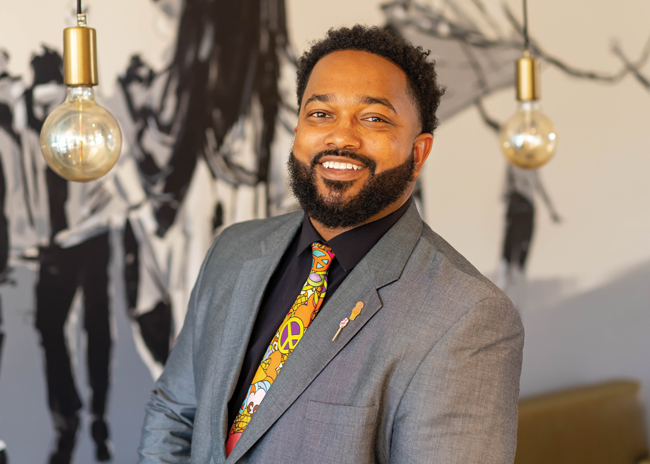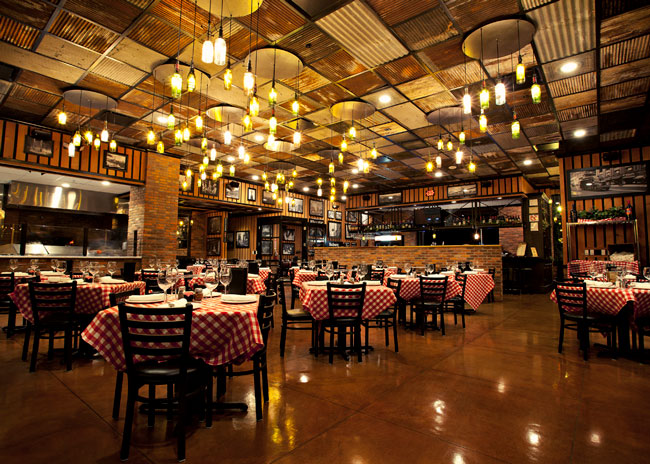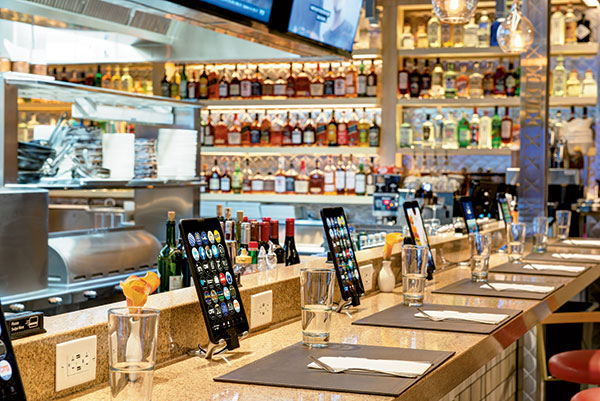Primo Partners started 2023 on a high note. In February the Chapel Hill, N.C.-based franchising company opened its first Starbucks location on the University of South Carolina campus in Columbia. This was unusual since the coffee giant’s locations tend to be corporate-owned.
 Antonio McBroomPrimo has been on a roll for some time, however. Antonio McBroom established Primo Partners in 2008 at the age of 21 when he took over the franchise contract for a Ben & Jerry’s location on the University of North Carolina-Chapel Hill campus, where he’d worked as an undergrad. This year he opened two more, one in Raleigh, N.C. and another in St. Louis. He has another slated to open before year’s end in Atlanta, and plans to open another in Greenville, S.C.
Antonio McBroomPrimo has been on a roll for some time, however. Antonio McBroom established Primo Partners in 2008 at the age of 21 when he took over the franchise contract for a Ben & Jerry’s location on the University of North Carolina-Chapel Hill campus, where he’d worked as an undergrad. This year he opened two more, one in Raleigh, N.C. and another in St. Louis. He has another slated to open before year’s end in Atlanta, and plans to open another in Greenville, S.C.
All told, Primo operates 15 Ben & Jerry’s franchises and one Starbucks. Here McBroom discusses getting into franchising and growing his business.
How did you get into franchising at the age of 21?
AM: Every franchisor has a different set of requirements like credit score, liquidity, net worth and management experience. I took a team approach to satisfy those franchise requirements. I had a mentor, Eric Taylor, who was a few years older than myself, working in Boston as an engineer. He was 25 but when you put our two stories together, we were just where we needed to be to meet the requirements.
I was fortunate in college that I didn’t have to take out student loans. I had a full merit scholarship and a job, so I had a nest egg, something to start with. And I had been managing and working at the shop, starting as a scooper, and becoming assistant manager by my junior year, so I had experience. Eric was a residential advisor for MIT and had purchased a house, so he had established credit. When we put everything together, it was enough.
You have grown through franchising; how fast did you move?
AM: Slowly. First, I focused on making that first store better, getting more revenue, improving signage, etc. As I grew, I saw I could get immersed in the community, so my first growth was getting out there with guerrilla marketing and looking at ways to use the brand I had. I didn’t want to sit back on my heels and wait for people to come to my store. I wanted to get on offense.
My first expansion was a Ben & Jerry’s prototype cart that I ran for a summer in 2011 in a nearby shopping center. That allowed me to experience operating multiple locations at the same time and allowed me to develop my leadership.
Then, at the beginning of 2014, I had an opportunity to purchase one of the existing shops that was an hour away. That was when I was able to do some mathematical magic and make 1+1=3. What I mean is, when I put the two of them together, all their community efforts together, it was almost like having another store. It was a big transition going from one store with part-time workers to two, and I could hire a seasoned manager for each. I had two shops for three years then I started scaling and went from two to five then grew into those shoes, then started doing multiple acquisitions in the same year.
That’s when I had my first management team and could start working on my business instead of in my business.

Why is it important to work on your business instead of in your business?
AM: I wouldn’t have had the time to develop had I continued to have my head in the dip case all the time. It allowed me to start to show up better for everyone around me. I think my company benefited from having a leader who was willing to spend the time coaching and mentoring them versus that being an afterthought. I didn’t want to not have time for the quarterly conversations or the annual feedback reviews or just talking day to day.
And sometimes there are skill sets within an organization that, as the founding member, you’re not the best fit for. Just by getting out of the way it can allow others to do their best.
How have you developed as a leader?
AM: Step one for leadership development is self-awareness. Learning more about myself and my strengths and any blind spots I had and continuing that self-awareness learning journey. That’s the biggest piece, and I’ve been intentional about doing that. Any time there’s an opportunity for me to take a course on leadership or read a specific book about a topic in leadership such as communication or delegation, I’ll become a student of those topics. I welcome feedback a lot.
Building on that boiled down to using the strengths I have around strategic planning, vision setting and communication and utilizing those strengths more and more within my leadership practice. Those are some of the cornerstones for me.
I’ve also worked with Outward Bound Professional, and it helps to go and spend time in nature and learn cornerstones around leadership in a different setting. It really makes you reflect. I’ve also been a big fan of positive intelligence and the book “Positive Intelligence” by Shirzad Chamine and being more aware of any saboteur I have and learning how to build different areas of my brain like using a muscle. I’m a student of leadership.
Why did you want to get into the Starbucks business?
AM: We’ve always emulated and looked up to Starbucks as a very reputable company. They have achieved process mastery on a grand master level. As I was building my company that was something we talked about. How could we offer the level of hospitality of Starbucks. We were growing and starting to get into uncharted territory, from a standpoint of size and number of locations, and at that point, consistency and systems and process become very important.
We just so happened to be connecting with Starbucks on some community impact work. We found great chemistry with their leadership team and asked what it would take for us to start partnering with them. We charted a unique path just by asking. Success can come from the quality of questions you ask.
As I was approaching my 15-year anniversary, I wanted to grow and learn in different ways. So, having another quick-service concept that was the best in its category was a great choice, and Starbucks’ core values align with mine. And, because the Starbucks was on a college campus, it was a great fit because it’s an environment I know really well and understood the seasonality and the ability to build a customer base.
Our goal is to be multi-unit, multi-brand. We understand the importance of getting the concept and growing with it. We spent 14 years exclusively doing Ben and Jerry’s, so now, with Starbucks, it’s going to take us some years to master that craft.
Primo is a very diverse company that’s 100% black-owned. How important is this to you? How else do you promote diversity?
AM: It’s so important to be a company that’s reflective of society. America’s now majority minority. We want to take this to a higher degree, so we got representation and we prioritize it as a business initiative. Our purpose is to create business opportunities for people like us — the African American male who was raised in rural North Carolina, the LGBTQIA youth. And as we grow, we will give leadership opportunities to people with a difficult background and we will give second chances to people who’ve had slip-ups or blunders.
You donate a percentage of revenues to supporting others such as We Are, a nonprofit whose mission is to extend anti-racist education. Tell us more about that.
AM: It’s fundamental to who I am, and I try to give back to diverse sources. One thing I’ve realized is the importance of focus, so I’ve had to learn to get more strategic and focused with my gifts. If it’s $10,000 I’m giving? Rather than giving $100 to a lot of different companies, I feel it’s more impactful giving $3,300 to three companies. And we focus on organizations that stand for equity and racial justice, criminal justice reform and education.



